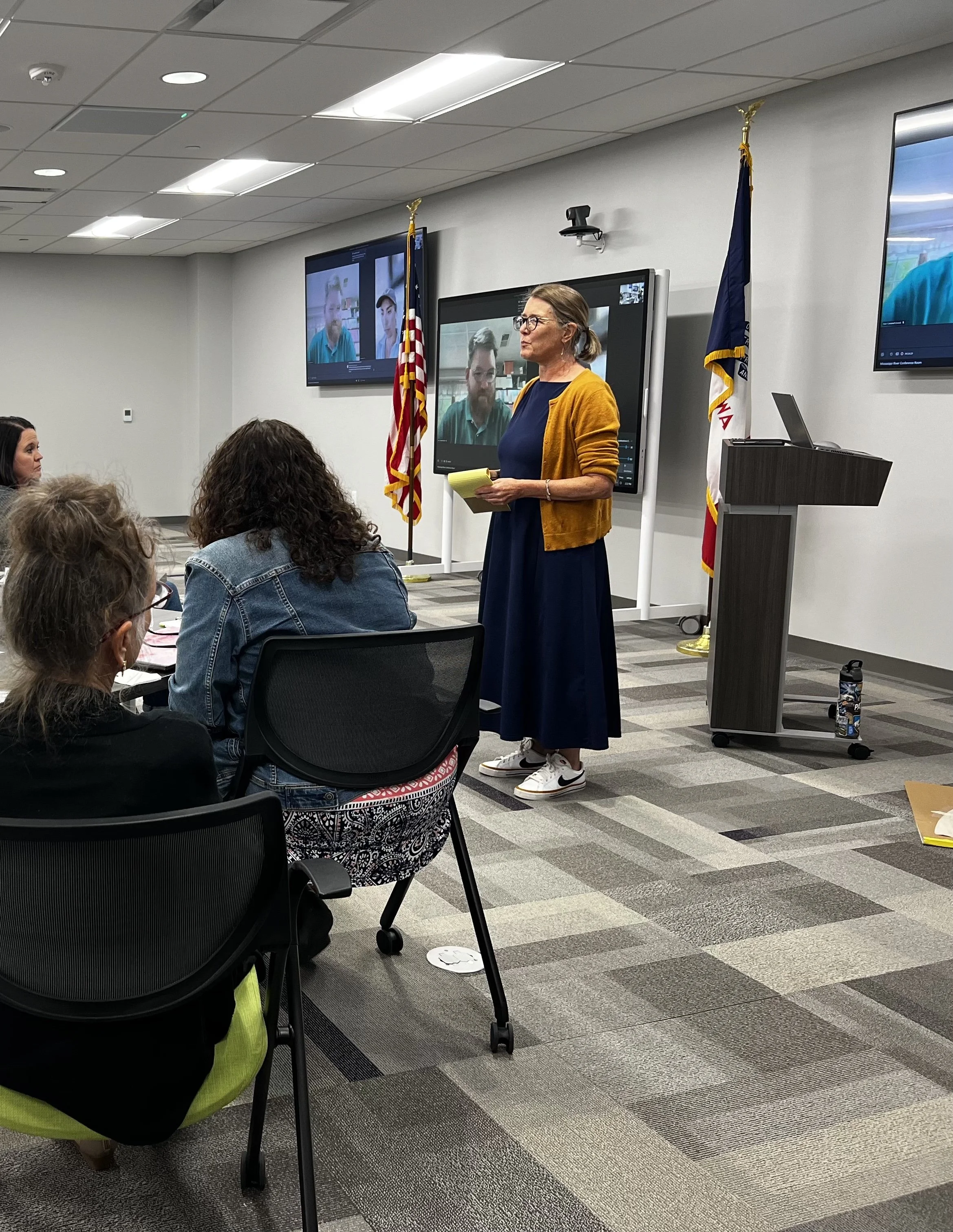
Facilitation
Facilitation: To make something easier or more likely to happen.
Facilitators are like a secret sauce. Add them to a previously rote process and remarkable things can occur. Our world has too many problems that need new approaches. Let’s apply imagination, wonder, and collaboration.
Is your board in a rut? Are the team members’ roles a bit murky? Has your nonprofit lost a clear sense of purpose? Maybe it’s time to let some your programs go — but which ones? Is change on the horizon and you want to be proactive?
Each of these is a great reason to include a facilitator in your process.
We do the boring stuff so that you don’t have to — like adhering to a schedule and making sure all voices are heard. We also bring the unexpected in the form of prompts, tools, and activities that kickstart creative, even profound conversations, that lead in intriguing new directions.
Best of all, facilitators lead so the team can be a team. We read the room and mediate, so no one else has to take on emotional labor. We have a backup plan when we need one.
SAMPLE WORKSHOPS
These can be strung together or used as a one-off.
What’s Your Story? Activities to evaluate if your team shares the same story and ways to improve how you tell it.
First, This - There’s a lot you want to do, but only so much time, energy, $$. Activities to help your team discern needs from wants while maintaining focus on your mission and audience.
Map Your … - Mapping is a great tool to visualize the internal & external experiences of a place, org, client base, process, etc. I offer activities that center map making and lead to questions & decision making.
FAIR PRICING TO MEET YOUR NEEDS
Tiered pricing reflects the size and financial resources of a client. It is important to me to work with and for organizations that are intentionally doing prosocial work.
Good facilitation opens up possibilities and makes previously invisible connections visible.
“We urgently need to bring to our communities the limitless capacity to love, serve, and create for and with each other.” - Grace Lee Boggs
WHAT TO EXPECT
GET STARTED: During an initial conversation(s) about your needs and goals, I might ask:
What do you hope will come from this — immediately, a year from now?
What are obstacles for this process, for your “success”?
How does each member of the team define “success”?
If you (as a team, an organization, an individual) were going to stop doing one thing that you think is no longer effective, what would it be?
Who is your audience?
Why does this (project / organization / service) matter?
NEXT:
I draft an outline of a facilitated experience that includes timing, goals for each segment, notes about “vibes”,etc., and I incorporate your feedback into the session(s).
EACH FACILITATED EXPERIENCE:
is built around collectively established safety and transparency
breaks down hierarchy so that all voices are heard and everyone’s experience matters
includes activities that are playful & humanizing to help us bring our entire selves to the table.
Examples of HYPHA’S facilitation work:
TWO
A group of 30+ members who represent various organizations and form an advisory council hadn’t met since before the pandemic. They needed to reconnect and establish a three-year agenda.
During a series of sessions, we used writing prompts and paired sharing; exercises that encourage BIG thinking; and physical activities to identify three main foci for the board’s work, while identifying short- and long-term goals.
ONE
How could a group of researchers from radically different disciplines discern best topics and ways for collaboration?
Over the course of four 2-hour meetings, we used storytelling, drawing, and clay modeling to learn about each other’s work and identify overlapping areas.
THREE
For its 20th birthday, a nonprofit wanted to capture its history across its numerous iterations. Past members who would likely never be in the same room again, came together for a daylong event.
We used storytelling in a fishbowl to invite all voices to be heard without anyone being drowned out. The session allowed people to move and change perspectives, literally and figuratively.






